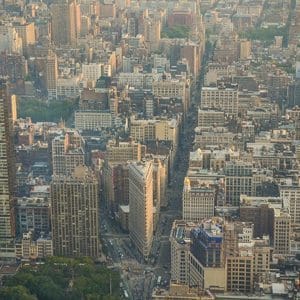Washington Heights is a neighborhood in the northern section of Manhattan. The neighborhood once spread as far south as 133rd Street, but now runs north from Hamilton Heights at 155th Street to Inwood.
Washington Heights is known to have been named for Fort Washington, which is listed on the United States National Register of Historic Places.
Continue reading this article to learn more about Washington Heights, brought to you by our Manhattan personal injury attorneys.
 United Nations Of Immigrants
United Nations Of ImmigrantsIn the 18th century, the southern section of what is now Washington Heights was settled by Europeans. In the early 1900s, Irish immigrants started settling into Washington Heights, in the 1930s and 1940s European Jews, escaping Nazism also took their place in this neighborhood. In the 1950s and 1960s, the area saw a new wave of Greek immigrants, seeing a new community known as the Astoria of Manhattan. By the 1980s to 1990s, the neighborhood experienced another wave of new immigrants from Cuba, Puerto Rico, the Dominican Republic and recently, Ecuador.
As of 2010, Washington Heights was recorded to have more than 150,000 residents.
What's interesting is that in 1904 The Hispanic Society of America was founded in the neighborhood, before the mass transition of Spanish-speaking immigrants in the area. As of now, Dominican culture is widespread in the neighborhood, so much so that it has been commemorated by the MTV docu-reality T.V. series, Washington Heights.
The modern-day Washington Heights currently has the lowest reported crime rates in all the neighborhoods in Manhattan, but this was not always the case.
In the 1980s, the area was heavily affected by the crack cocaine epidemic that overwhelmed all of New York City. Washington Heights faced more of this issue primarily because of a crack gang that hailed in the neighborhood, called the Wild Cowboys or the Red Top Gang. This gang was linked to Santiago Luis Polanco Rodríguez, who was the first mass marketer of crack cocaine in the U.S.
The Wild Cowboys were accountable for the rise of crimes such as murders during the late 1980s and the early 1990s. Washington Heights became the biggest drug distributor in the North East region during this time.
In 1988, a young police officer was killed by the Dominican drug dealers of Washington Heights. The young officer's death spurred on years of crime rate decline. Police presence heightened, seeing landlords allowing police to patrol in apartment buildings, which led to arrests being made of multitudes of drug dealers. Arrests of police officers also involved in drug dealings greatly transformed the neighborhood. A new police precinct was also added in the area.
To date, the crime rate in Washington Heights is much lower. In the 2000s, years after gangsters ruled this area, urban renewal began. In 2011 police records stated that Washington Heights was the fourth- safest neighborhood in Manhattan.
Washington Heights attractions include museums, gardens, mansions, and dining areas.
The Cloisters museum and garden is on a hill in Northern Manhattan's Fort Tryon Park. The museum is also a branch of the Metropolitan Museum of Art. What you can expect to see is art dedicated to the art and architecture of medieval Europe.
While there you can also see views of the Hudson River while walking through the gardens looking at medieval sculptures, stained glass, and tapestries.
Fort Tryon Park was a gifted to the City in 1935 by John D. Rockefeller. It is a 67- acre green space that is a favored spot for newlywed picture taking. The park is punctuated with jagged boulders which give urban rock climbers a different form of adventure.
As already mentioned, Fort Tryon Park is home to the Cloisters Museum and Gardens.
The Morris-Jumel Mansion, built in 1765 by Roger Morris, a British military officer, is the oldest Manhattan residence. This mansion has seen the development of northern Manhattan from rural countryside to its now multicultural community.
A visit to this mansion will help you revisit domestic life in New York City from 1765 to 1865 all the way to the City Beautiful movement at the turn of the century.
This restaurant is the place with the views. La Marina offers views of the George Washington Bridge and Hudson River. Not only do you have views, you also experience the vastness of the restaurant which is roughly about three venues in one.
Featured are two outdoor patios, one with a raw bar and the other a glass-enclosed indoor space.
Washington Heights has a number of transportation options via the New York City Subway. There is the IND Eighth Avenue Line which has services from 155th Street and 163rd Street. The trains there are the A, C, and 1 trains
located at different spots.
The IRT Broadway-Seventh Avenue Line there is the 1 train stops at 157th Street, 168 Street, 181st Street and 191st Street.
If you are in Washington Heights and need to locate hospitals and or the police, the following may be of help:
Washington Heights Family Health Center
575 West 181th Street
New York, NY 10033
(866) 463-2778
4295 Broadway
New York, NY 10033-3729
(212) 927-9711
Did you know how legal team helps those injured all throughout New York State? Visit our next article on accident reports to see how our injury lawyers fight for compensation: https://banvillelaw.com/february-12-new-york-state-accidents/